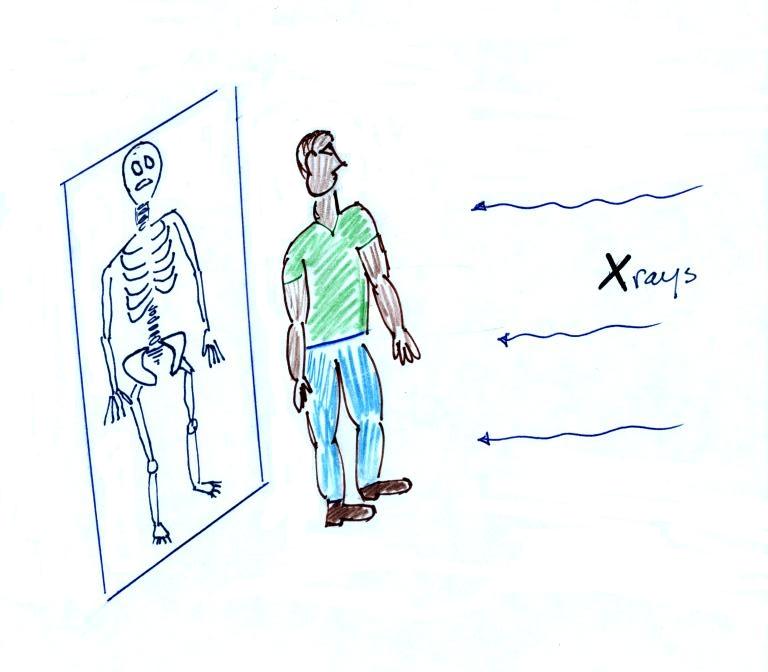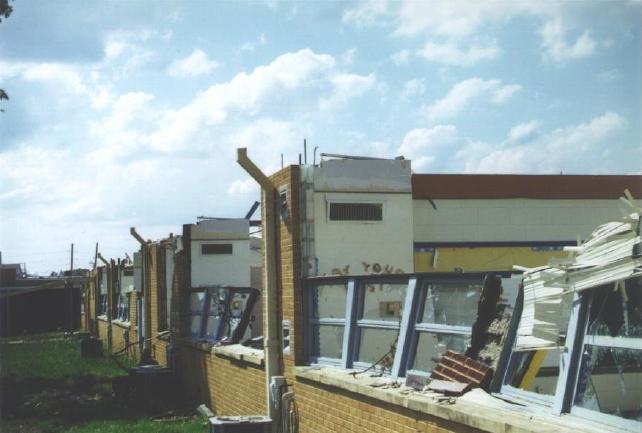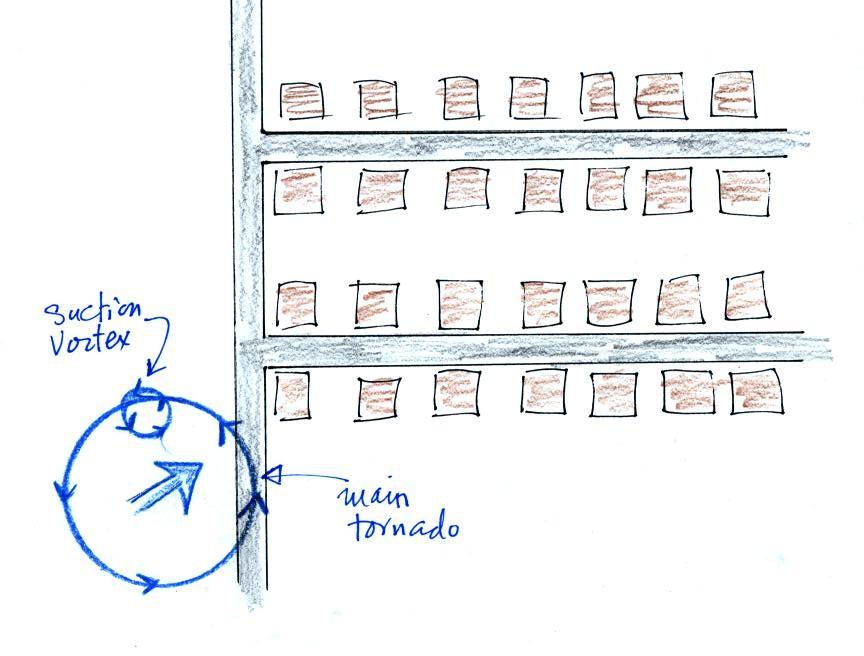










| Damage
Indicator |
Description |
| 2 |
1 or 2 family
residential home |
| 3 |
Mobile home (single
wide) |
| 10 |
Strip mall |
| 13 |
Automobile showroom |
| 22 |
Service station canopy |
| 26 |
Free standing light pole |
| 27 |
Tree (softwood) |
| degree
of damage |
description |
approximate wind speed (MPH) |
| 1 |
visible damage |
65 |
| 2 |
loss of roof covering
material |
80 |
| 3 |
broken glass in doors
& windows |
95 |
| 4 |
lifting of roof deck,
loss of more than 20% of roof material, collapse of
chimney, garage doors collapse inward, destruction of
porch roof or carport |
100 |
| 5 |
house slides off
foundation |
120 |
| 6 |
large sections of roof
removed, most walls still standing |
120 |
| 7 |
exterior walls collapse
(top story) |
130 |
| 8 |
most interior walls
collapse (top story) |
150 |
| 9 |
most walls in bottom
floor collapse except small interior rooms |
150 |
| 10 |
total destruction of
entire building |
170 |
| EF2 Damage roof is gone, but all walls still standing |
EF4 Damage only the strong reinforced concrete basement walls are left standing. It doesn't look like there would have been anywhere in this building that would have provided protection from a tornado this strong. |
EF5 Damage complete destruction of the structure |
 |
 |
 |



